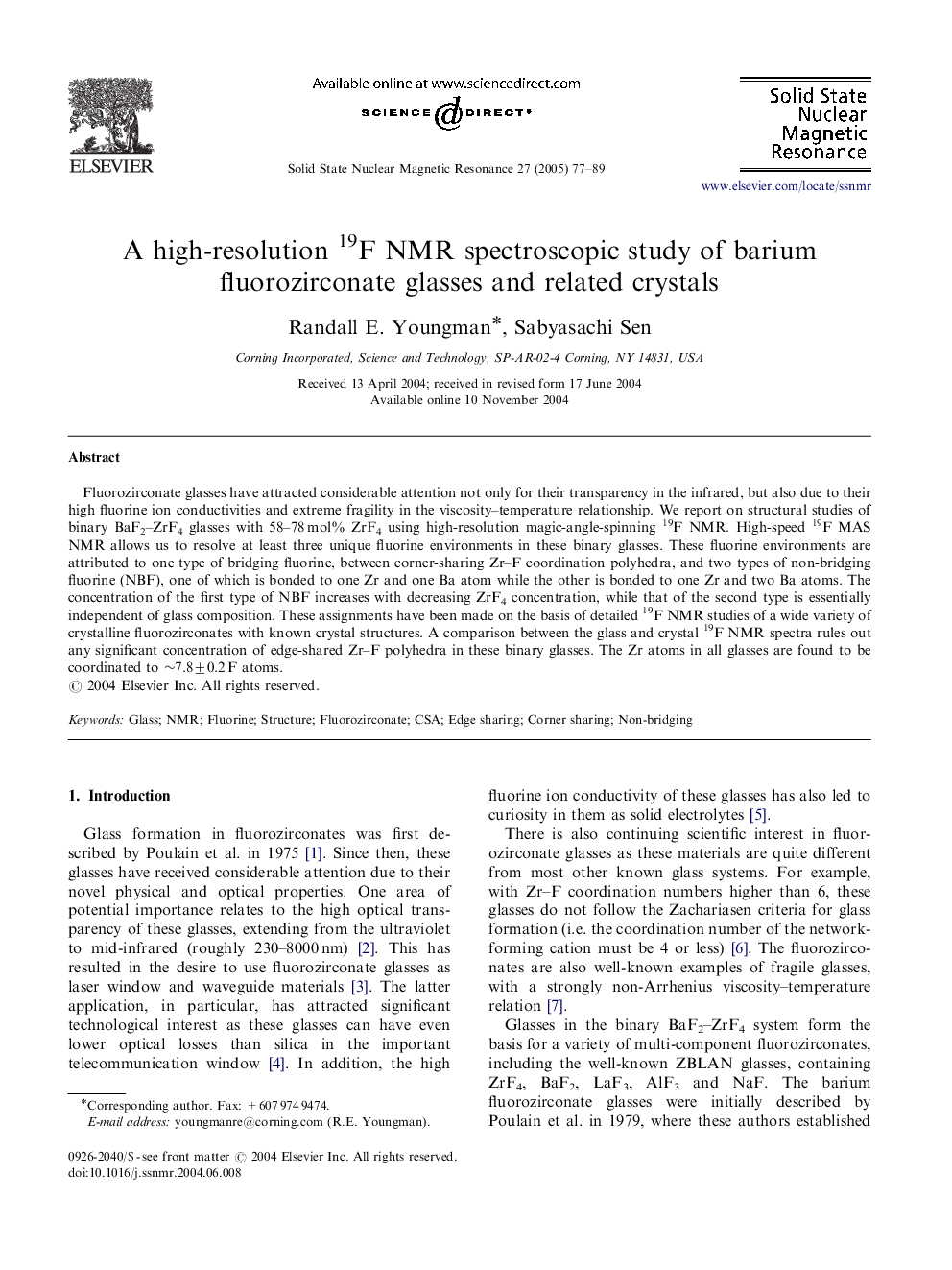| Article ID | Journal | Published Year | Pages | File Type |
|---|---|---|---|---|
| 9594229 | Solid State Nuclear Magnetic Resonance | 2005 | 13 Pages |
Abstract
Fluorozirconate glasses have attracted considerable attention not only for their transparency in the infrared, but also due to their high fluorine ion conductivities and extreme fragility in the viscosity-temperature relationship. We report on structural studies of binary BaF2-ZrF4 glasses with 58-78 mol% ZrF4 using high-resolution magic-angle-spinning 19F NMR. High-speed 19F MAS NMR allows us to resolve at least three unique fluorine environments in these binary glasses. These fluorine environments are attributed to one type of bridging fluorine, between corner-sharing Zr-F coordination polyhedra, and two types of non-bridging fluorine (NBF), one of which is bonded to one Zr and one Ba atom while the other is bonded to one Zr and two Ba atoms. The concentration of the first type of NBF increases with decreasing ZrF4 concentration, while that of the second type is essentially independent of glass composition. These assignments have been made on the basis of detailed 19F NMR studies of a wide variety of crystalline fluorozirconates with known crystal structures. A comparison between the glass and crystal 19F NMR spectra rules out any significant concentration of edge-shared Zr-F polyhedra in these binary glasses. The Zr atoms in all glasses are found to be coordinated to â¼7.8±0.2 F atoms.
Related Topics
Physical Sciences and Engineering
Chemistry
Physical and Theoretical Chemistry
Authors
Randall E. Youngman, Sabyasachi Sen,
